- Home
- James Rollins
Sigma Force 10 - The Sixth Extinction Page 25
Sigma Force 10 - The Sixth Extinction Read online
Page 25
She faced around again, recognizing a hard truth.
I’m on my own.
After several more minutes, the van braked hard, sliding Jenna forward a couple of feet. She scooted up. Out the front window spread a rusted slum, the homes densely packed, clearly fabricated from whatever could be scavenged. But this wasn’t her kidnappers’ destination.
An old helicopter rested on a dirt pad. Its rotors already chopped at the air, preparing to depart.
Jenna despaired.
Where are they taking me?
8:32 A.M.
Still in Cutter’s main lab, Kendall stood at the threshold to a neighboring Level Four biosafety facility, where a few technicians labored inside, their suits tethered with yellow air hoses. A moment ago, Cutter had stepped away to take a call. Kendall breathed deeply, still struggling to decide whether to help the bastard or not.
If I don’t, the entire world could be destroyed.
If I do, would the end result be the same?
He balanced on a dagger’s edge, his decision teetering upon one unanswered question: What was Cutter’s plan for Kendall’s synthetic eVLP? He remembered the man’s worrisome description of that perfect empty shell.
A Trojan horse . . . a flawless genetic delivery system.
Cutter clearly planned on filling that Trojan horse—but with what?
Can I trust him when he says no one would be killed from whatever he planned to engineer into that empty shell?
Kendall’s mind spun around and around, glad for whatever call allowed him the additional time to come to a decision. He used the delay to study the quarantined space before him. Like the main genetics facility behind him, the Level 4 lab contained the latest in DNA analysis and gene manipulation equipment. The back wall held a large refrigerated unit with glass doors. Rows of vials glowed behind that window.
A chill traced up his spine as he tried to imagine what was stored in there. But it was the four adjacent rooms flanking the refrigerator that truly terrified him. Each chamber contained a different piece of medical equipment. He recognized a simple X-ray machine in one room and a CT scanner in the next. The last two rooms held a magnetic resonance scanner for looking deep into tissues and a PET—positron emission tomography—scanner, for developing three-dimensional images of biological processes.
The presence of these pieces of equipment left no doubt.
Cutter had advanced to animal testing.
But how advanced was that testing?
Cutter finally returned, his manner more relaxed, as if he’d had good news. “Looks like we may be entertaining a guest before much longer. But we have much work to do before that, don’t we, Kendall?”
Cutter lifted a curious brow, expecting an answer.
Kendall stared into the BSL4 lab. “And you swear, if I cooperate—if I teach you my technique—that no one will die as a result?”
“I can promise you that what I plan to use this technique for is entirely non-lethal.” Cutter frowned as he must have read the distrust still shining on Kendall’s face. “Maybe I can ease your mind with a short excursion. Won’t take but a few minutes.”
Cutter turned on a heel and headed away.
Kendall hurried after him, more than happy for the additional delay. Mateo followed behind, his ever-present shadow.
“Where are we going?” Kendall asked.
Cutter smiled back at him, a boyish enthusiasm glowing from his face. “A wonderful place.”
Still, as Cutter turned back around, Kendall noted the drawn pull of his left shoulder. He imagined the thick scars binding that side. It was a reminder that despite appearances, that boy was long gone. He died on that African savannah ages ago. What was left was a hard and twisted genius with dark ambitions, deeply embittered at the world.
They exited the main genetic hall and followed a long natural tunnel. Kendall imagined they were crossing toward the middle of the plateau.
Cutter strode along, taking large steps. “We are not so different, you and I.”
Kendall didn’t bother disagreeing.
“We both care for this planet, are concerned where it’s headed. But where you seek to preserve the status quo through your conservation efforts, I believe the world is too far gone. Man is incapable of reversing what its industry has wrought. Our appetites have grown too gluttonous, while our vision has grown narrower and narrower. Conservation is a lost cause. Why save a species here or there when the entire ecology collapses around your ears?”
“It was just such a calamity that I was trying to solve in California,” Kendall countered. “To find a system-wide solution.”
Cutter scoffed. “By attempting to engineer XNA hardiness and adaptability into various species as a whole? All you’re doing is stealing from one biosphere in order to preserve another that is dying.”
Kendall’s back stiffened. So Cutter knew what he had been attempting to accomplish. The scientific term for it was facilitated adaptation, to fortify DNA in order to make a species more resistant to disease or make it more robust to survive in a harsh environment. He refused to apologize for his work. His research had the potential to protect many species against the ravages to come, but his work was still in its early stages. Unfortunately, what he had created so far was unrefined, dangerous, consuming all it touched, destroying any DNA it encountered.
It was never meant to be released.
As anger flared anew, Kendall confronted Cutter. “Then what would you have us do? Nothing?”
Cutter turned to him. “Why not? Get out of nature’s way. Nature is the greatest innovator of all. It will survive us . . . maybe not in the form that you like or are familiar with. In the end, evolution will fill all those gaps created by a major die-off. All five past extinctions triggered an explosion of evolution afterward. Look at humankind. The dinosaurs had to die so we could rise. It is only through death that new life can grow.”
Kendall had heard this central tenet of Dark Eden often enough to recognize it here. He boiled it down to its essential. “The great extinction holds the promise to bring about a new genesis.”
Cutter nodded. “The beginning of a new Eden.”
From the ardor in the other’s voice, it sounded like he could not wait for that to happen.
Kendall sighed. “There remains a fundamental flaw to your reasoning.”
“And what is that?”
“Extinction is fast. Evolution is slow.”
“Exactly.” Cutter stopped, looking close to hugging him for a moment. “That’s exactly right! Extinction will always outpace evolution. But what if we could speed evolution up?”
“How?”
“I’ll show you.”
Cutter had reached a thick steel door that blocked the tunnel. He pulled a keycard from around his neck. “Conservation must worry less about preserving the life that was, and focus on nurturing what will come next.”
“But how do we know what’s coming?”
“We create it. We direct evolution toward this new genesis.”
Kendall was stunned into silence.
Cutter swiped his card, and thick bolts began to slowly unlock.
“That’s impossible,” Kendall whispered, but even he couldn’t convince himself. Genetic engineering and DNA synthesis were already at that threshold.
“Nothing’s impossible,” Cutter countered, as he pulled open the door. “Not any longer.”
Bright daylight flooded the dimly lit tunnel, accompanied by a sweet mélange of scents undercut with the familiar muskiness of loam and rotted leaf. Drawn by that light, by the fresh air, Kendall followed Cutter gladly out of the passageway and onto a metal scaffolding that protruded from the side of a cliff.
As his boots clanked across the grating, Kendall craned up at the blue sky. The perch was fifteen feet from the lip of what appeared to be a huge sinkhole. The walls had been terraced into various levels of gardens, bursting with orchids, bromeliads, leafy vines, and blossoms of every hue and size. Each tier was
connected by a winding road that corkscrewed along the inside walls.
Kendall watched an electric golf cart glide silently along that road, climbing toward their position, passing by gates that opened automatically before it. A triangular yellow sign with a black lightning bolt hung on the neighboring fence, indicating that each level’s barrier was electrified.
Worry dampened his momentary wonder.
Cutter stood to the side, scanning the nearby walls, as if searching for weeds growing in his fantastical garden. “Ah,” he finally said. “Down here. Come see for yourself.”
He opened a gate along the landing’s railing and climbed down a steep set of metal stairs to the stone road winding by at his level. Kendall kept his gaze away from that long central drop. It was so far down that he could barely see the bottom, especially with the morning sun still low on the horizon. Still, he noted what appeared to be the crowns of giant trees down there, possibly a piece of the Brazilian rain forest trapped below.
With great care, Kendall stepped from the steel stairs to ancient sandstone. He retreated from the edge of the road, away from that yawning precipice. On the far side spread a series of raised beds, about ten yards deep. They rode up against the cliffs, merging with the thick cascade of green growth that draped the walls. Narrow walkways crisscrossed those plantings. It all could be easily mistaken for some organic vegetable garden, but Kendall suspected what grew here was something far more insidious and anything but organic.
He noted a string of long-legged ants, each the size of his thumb, parading along the edge of one box.
“Paraponera clavata,” Cutter named them. “Commonly known as bullet ants. Those little buggers got their nickname because their bite is considered one of the worst stings. The very top of the Schmidt sting pain index. Victims compare it to getting shot, and the pain can last for up to twenty-four hours.”
Kendall took a step back.
“I was able to double their venom load.”
Kendall glanced harshly at Cutter.
“A bite from one of these will leave you paralyzed and in excruciating pain. One of my workers accidentally got stung. He broke his back molars from the grinding pain. But that’s not all. Come a little closer.”
No thank you.
Kendall stayed rooted in place.
Cutter picked up a broken piece of a branch. “Bullet ants—like all ants—are ground-locked members of the Hymenoptera order, which includes bees and wasps.”
He poked a reddish-black straggler, which responded by flaring out small membranous wings, all but invisible before. It flew a few inches away, then landed amid its stinging brethren, stirring them up.
“It was easy to return their wings to them,” Cutter said. “Just a matter of splicing in genes from a tarantula hawk wasp. Especially as the two species share the same genetic heritage.”
“You created a chimera,” Kendall finally choked out. “A genetic hybrid.”
“Precisely. I haven’t been able to give them full flight yet, so far just those little buzzing bursts like you saw, but hopefully with time and environmental pressure, nature will do the rest, getting them flying as readily as their waspish cousins.”
“How?” Kendall sputtered for a moment. “How did you accomplish this?”
“It was not all that difficult. You know as well as I that the technology is currently available. It was just a matter of having the will and resources to do it, free of oversight and regulation. You already saw my lab is equipped with multiple stations that use the latest CRISPR-Cas9 technique. A process I’ve refined further, by the way.”
That was chilling news. CRISPR-Cas9 could already engineer any part of a genome with such precision that it had been likened to editing individual letters in an encyclopedia without creating a single spelling error.
“And you’re certainly familiar with the MAGE and CAGE processes developed by George Church.”
Kendall felt the blood drain into his legs. Like CRISPR, those two new techniques—multiplex automated genome engineering and conjugative assembly genome engineering—were sometimes referred to as evolution machines. These two gene-editing technologies were indeed just that, capable of automating thousands of genetic changes at the same time. They could introduce millions of years of evolution within minutes.
MAGE and CAGE held the promise to alter synthetic biology forever, taking it to new heights—but where would those heights take us?
He stared in horror at the row of large ants.
Cutter twiddled the small twig in his hand, seemingly disappointed by Kendall’s reaction. “I read in a piece you wrote last year that you advocate using MAGE and CAGE as tools for resurrecting lost species.”
He was right. These new gene-editing technologies held great promise. Researchers could take the intact genome of a living animal—then start making edits and alterations to the DNA, slowing converting it to the genome of a related species that had gone extinct.
“Start with an elephant and you might be able to resurrect a woolly mammoth out of its genes,” Kendall mumbled aloud.
Not only was it theoretically possible, a Russian had gone so far as to create an experimental preserve in Siberia—called Pleistocene Park—where he hoped to allow these soon-to-be-created woolly mammoths to roam free.
“De-extinction was the word you used in the article,” Cutter said with disdain. “It’s such a sad distraction. To use such promising technology for this narrow preservationist agenda. All you’re doing is choking nature’s ability to respond to the damage wrought by humankind.”
“And this is your answer?” Kendall mocked, waving to the line of marching black ants.
“Only a small part of a larger picture. Where you and your colleagues dwell in the past, looking to de-extinction for salvation, I turn to the future, to prepare for what’s to come with a plan for rewilding.”
“Rewilding?”
“To reintroduce keystone species—animals and plants that have the most impact on the environment.”
“Like your ants.”
“I’ve engineered my creations—all my creations—to be stronger, with the necessary tools to survive us. Along with newer innovations.”
Cutter took his twig and encouraged one of the ants to climb atop its tip. Before it could clamber up and bite him, he flicked it into a neighboring planter box. The ant landed on a wide leaf of a bromeliad and scrambled along its length. Thin wings vibrated in irritation.
Then from a pore in the leaf, a glistening bubble erupted, enveloping the ant in a thick gelatinous sap. The squirming insect fought, but in seconds its legs dissolved away, followed shortly thereafter by the rest of its body. After that, the jelly bubble quickly liquefied, trickling down the inside of the leaf to feed the root ball at the base.
“Here I engineered in a sequence of genes from the carnivorous sundew,” Cutter explained. “Including intensifying its digestive enzymes.”
Kendall’s stomach churned as he turned to stare at the dark garden spread below. “How many others?”
“Hundreds of species. But they’re just the first wave. I also took the step to genetically bind each alteration to sequences of DNA retrotransposons.”
Kendall began to fathom what Cutter intended. Retrotransposons were also called jumping genes, named for their ability to leap between species in a process called horizontal gene transfer. Geneticists had come to believe these jumping genes were potent engines of evolution, passing traits across species lines. Recent studies of cattle DNA showed that a full quarter of their genome came from a species of horned viper, proving that Mother Nature had been shuffling genes for millennia, creating hybridized species since the dawn of time.
But it was no longer just nature.
“This is how you plan to speed up evolution,” Kendall realized aloud. “You intend to use these traits tied to jumping genes to spread what you’ve created far and wide.”
“Each species will be like a seed cast to the wind. One hybrid will lead to two,
two to four. In all that shuffling, can you imagine what new species will arise? What new combinations will appear? All of them fighting to survive in this damaged world we created.”
Kendall pictured a great conflagration spreading through the rain forest and across the world.
If Cutter could accomplish so much already, why does he need my engineered armor shell? What does he plan to put inside it?
There had to be another step to this madman’s scheme.
“A new Eden beckons,” Cutter continued, his voice exultant. “We are at the threshold of a new world. A genesis so dramatic we could witness it in our lifetime. I want to share that with you. Will you help me achieve it?”
Kendall faced the raw passion standing before him and did the only thing he could. He had to survive long enough to stop the man.
“Yes . . . I’ll help you.”
8:44 A.M.
“We have to go after her,” Drake said, stomping back through the carnage left in the wake of the firefight, followed by his two teammates.
Painter knelt over one of the survivors, a young waitress. He had a towel pressed to her side, stanching the blood from a round through the lower abdomen. His own shoulder burned from the bullet that had torn a chunk from the back of his arm. Earlier, Malcolm had quickly bandaged it from a med-kit in his backpack.
The three Marines had already swept the streets behind the establishment, but there was no sign of Jenna.
Painter understood the frustration he heard in Drake’s voice.
In the distance, sirens descended toward this location. They would lose even more time dealing with local authorities.
A groan sounded from behind the counter.
So somebody finally decided to wake up.
Painter waved Schmitt to take his place. “Get a pressure wrap on this woman.”
As the Marine obeyed, he crossed to the source of the noise. A figure lifted his head from the floor. His hands were tied behind his back. Blood soaked the mask that hid his features. It was the gunman who Jenna had cold-cocked during the fight. In their hurry, Jenna’s kidnappers must have believed he was dead, especially from all of the blood.

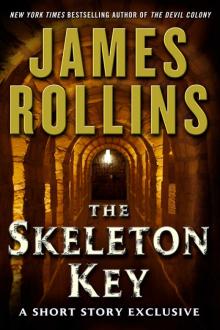 The Skeleton Key
The Skeleton Key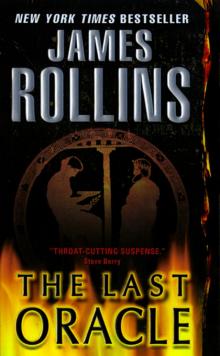 The Last Oracle
The Last Oracle The Judas Strain
The Judas Strain Black Order
Black Order Sandstorm
Sandstorm Ghost Ship
Ghost Ship The Devil Colony
The Devil Colony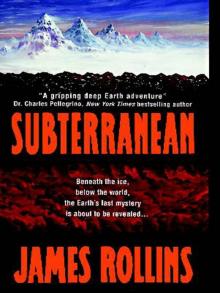 Subterranean
Subterranean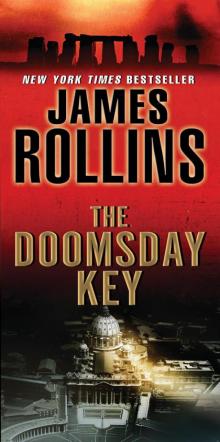 The Doomsday Key
The Doomsday Key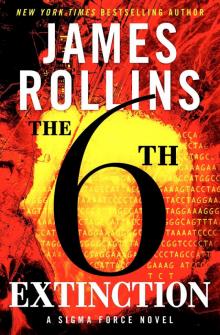 The 6th Extinction
The 6th Extinction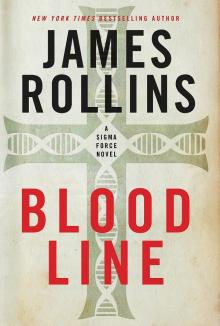 Bloodline
Bloodline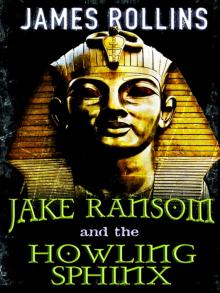 Jake Ransom and the Howling Sphinx
Jake Ransom and the Howling Sphinx The Midnight Watch
The Midnight Watch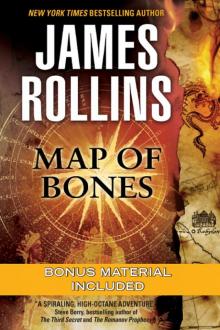 Map of Bones
Map of Bones The Demon Crown
The Demon Crown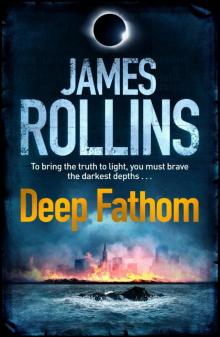 Deep Fathom
Deep Fathom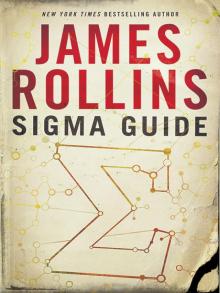 Sigma Guide
Sigma Guide Kowalski's in Love
Kowalski's in Love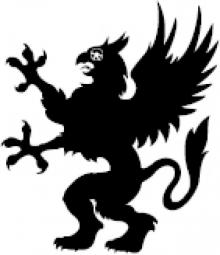 Jake Ransom and the Skull King's Shadow
Jake Ransom and the Skull King's Shadow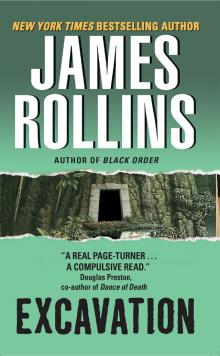 Excavation
Excavation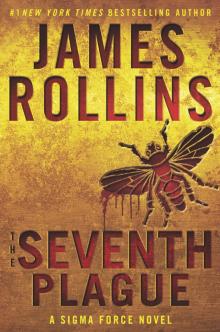 The Seventh Plague
The Seventh Plague Altar of Eden
Altar of Eden Unrestricted Access: New and Classic Short Fiction
Unrestricted Access: New and Classic Short Fiction Indiana Jones and the Kingdom of the Crystal Skull
Indiana Jones and the Kingdom of the Crystal Skull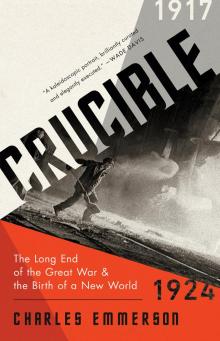 Crucible
Crucible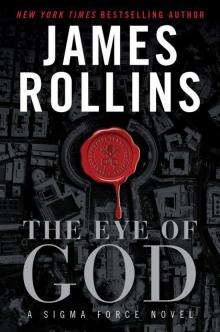 The Eye of God
The Eye of God The Bone Labyrinth
The Bone Labyrinth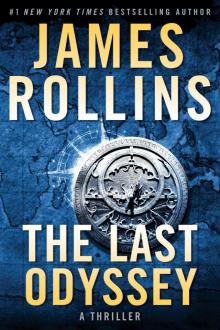 The Last Odyssey: A Thriller
The Last Odyssey: A Thriller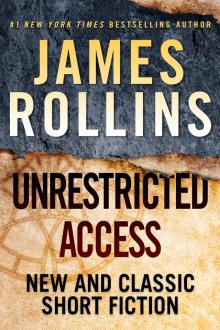 Unrestricted Access
Unrestricted Access Amazonia
Amazonia Blood Brothers: A Short Story Exclusive
Blood Brothers: A Short Story Exclusive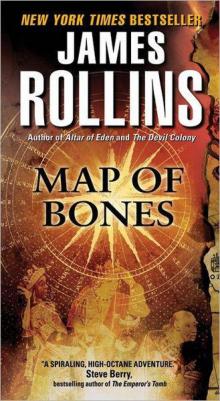 Map of Bones: A Sigma Force Novel
Map of Bones: A Sigma Force Novel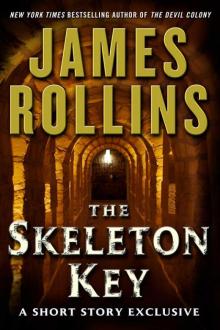 The Skeleton Key (sigma force)
The Skeleton Key (sigma force)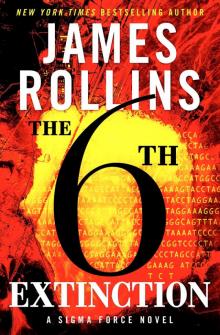 Sigma Force 10 - The Sixth Extinction
Sigma Force 10 - The Sixth Extinction Innocent Blood
Innocent Blood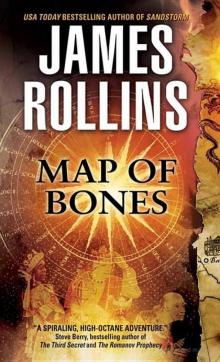 Map of Bones sf-2
Map of Bones sf-2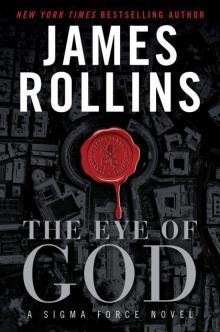 The Eye of God: A Sigma Force Novel
The Eye of God: A Sigma Force Novel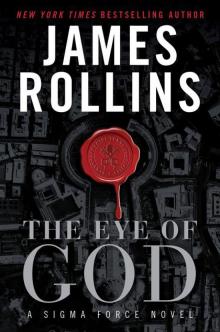 The Eye of God: A Sigma Force Novel sf-9
The Eye of God: A Sigma Force Novel sf-9 The Pit
The Pit Indiana Jones and the The Kingdom Of The Crystal Skull
Indiana Jones and the The Kingdom Of The Crystal Skull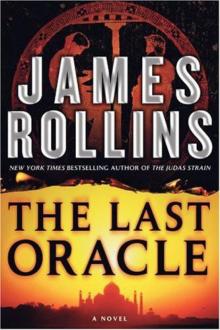 The Last Oracle (2008) sf-5
The Last Oracle (2008) sf-5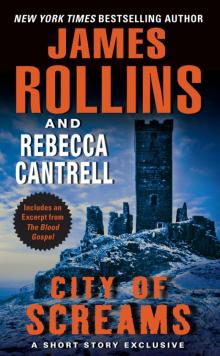 City of Screams
City of Screams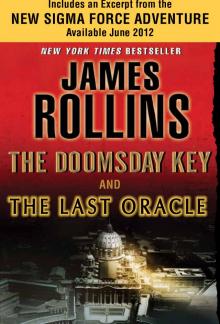 The Doomsday Key and The Last Oracle with Bonus Excerpts
The Doomsday Key and The Last Oracle with Bonus Excerpts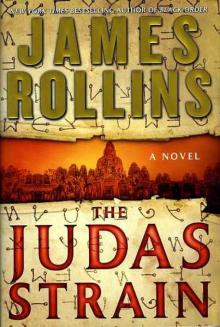 The Judas Strain sf-4
The Judas Strain sf-4 Blood Infernal
Blood Infernal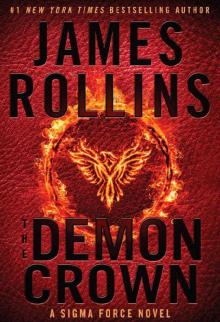 The Demon Crown: A Sigma Force Novel
The Demon Crown: A Sigma Force Novel War Hawk: A Tucker Wayne Novel
War Hawk: A Tucker Wayne Novel SANDSTORM sf-1
SANDSTORM sf-1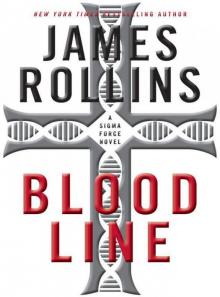 Bloodline: A Sigma Force Novel
Bloodline: A Sigma Force Novel Amazonia: a novel
Amazonia: a novel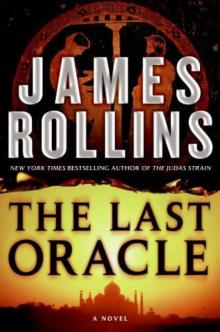 The Last Oracle: A Sigma Force Novel
The Last Oracle: A Sigma Force Novel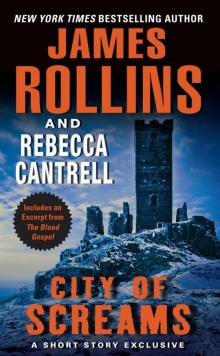 City of Screams (the order of the sanguines)
City of Screams (the order of the sanguines) Ghost Ship: A Sigma Force Short Story
Ghost Ship: A Sigma Force Short Story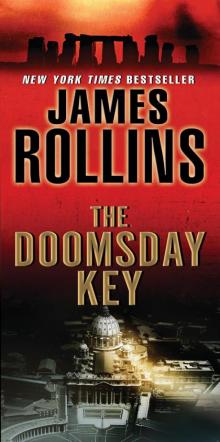 The Doomsday Key: A Sigma Force Novel
The Doomsday Key: A Sigma Force Novel